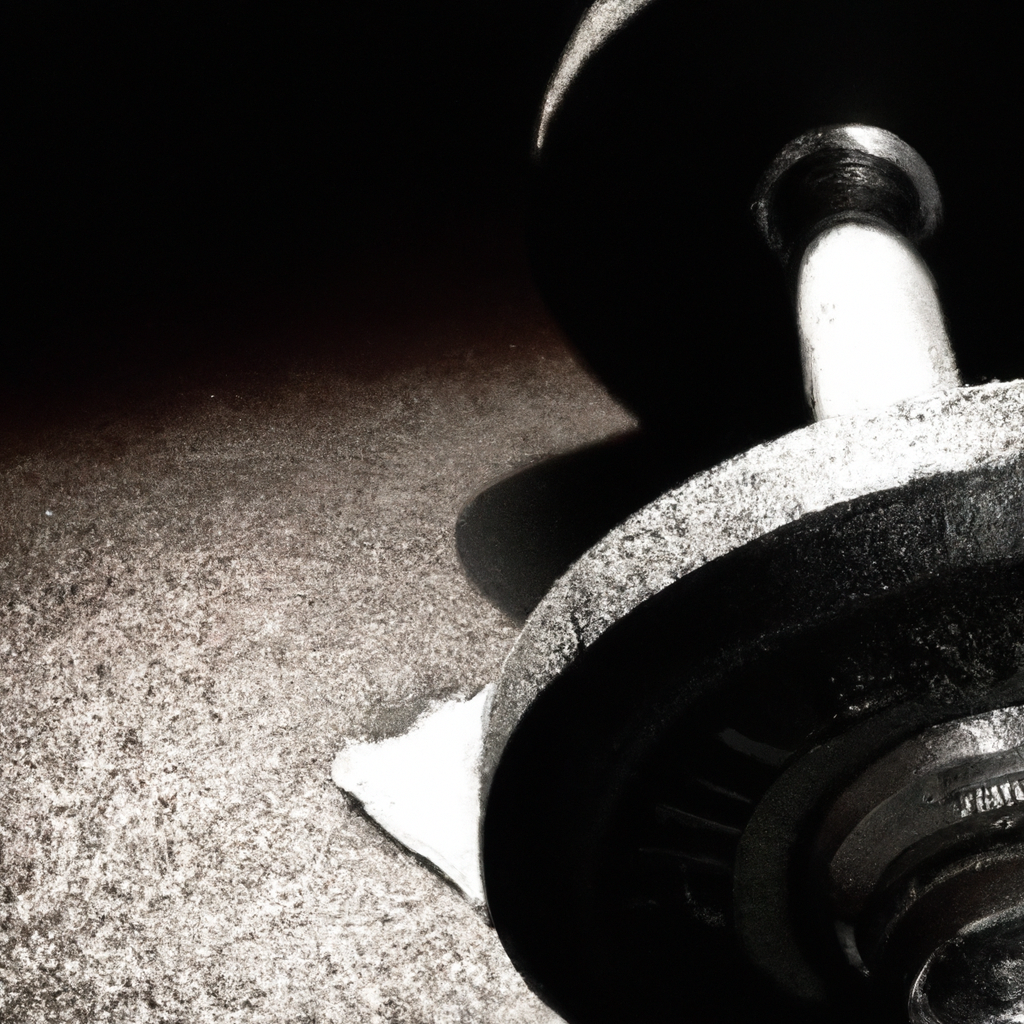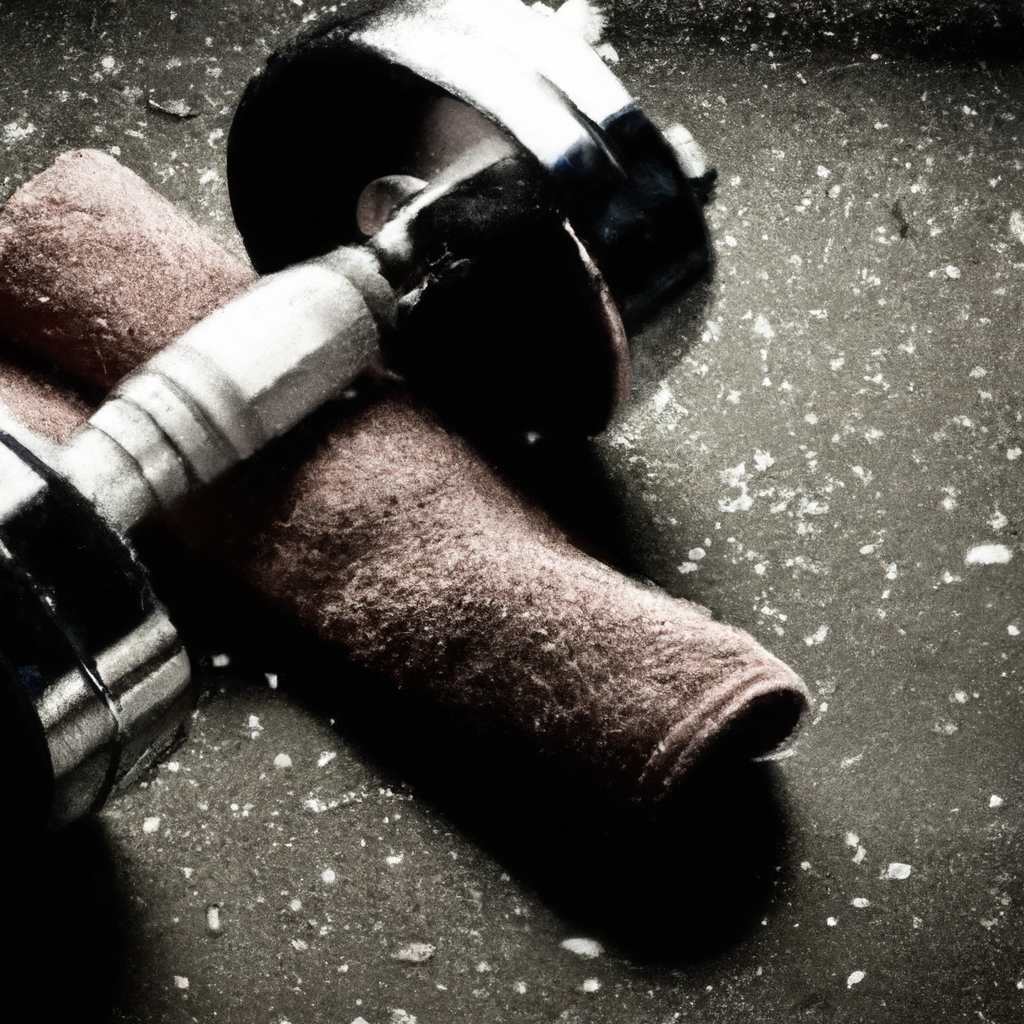If you’ve been looking to build muscle and strength, then you’re in luck! This article is here to guide you on creating tailored content that is specifically designed for individuals who are interested in gaining muscle and increasing their strength. Whether you’re a fitness enthusiast, an athlete, or simply someone wanting to improve your physique, this article will provide you with valuable insights and tips on how to create content that will help you reach your goals. From workout routines to nutrition advice, we’ve got you covered. So, let’s get started on this journey towards building the muscle and strength you’ve always desired!

Understanding the Basics of Muscle and Strength Building
Different types of muscle fibers
When it comes to muscle building, it’s important to understand the different types of muscle fibers in the body. The two main types of muscle fibers are slow-twitch (type I) and fast-twitch (type II) fibers. Slow-twitch fibers are more resistant to fatigue, while fast-twitch fibers are responsible for explosive movements and have a greater potential for growth. By targeting both types of muscle fibers in your training program, you can maximize muscle growth and overall strength.
The role of protein in muscle growth
Protein is a crucial component in muscle building and repair. When you exercise, your muscles experience microscopic damage, and protein helps to repair and rebuild these damaged muscle fibers, leading to muscle growth. It is recommended to consume an adequate amount of high-quality protein throughout the day to support muscle growth and recovery. Good sources of protein include lean meats, poultry, fish, dairy products, eggs, and plant-based proteins such as legumes, tofu, and quinoa.
The importance of progressive overload
Progressive overload is a fundamental principle in muscle and strength building. It involves gradually increasing the demands placed on your muscles over time to stimulate further growth. This can be achieved by increasing the weight you lift, the number of repetitions, or the intensity of your workouts. By consistently challenging your muscles in this way, you stimulate adaptation and promote muscle growth. Remember to progress gradually and listen to your body to avoid overtraining and injuries.
Designing a Training Program for Muscle and Strength Building
Setting realistic goals
When designing a training program for muscle and strength building, it’s important to set realistic goals. Your goals should be specific, measurable, attainable, relevant, and time-bound (SMART goals). For example, setting a goal to increase your squat by 10% within three months is more realistic and achievable compared to aiming to double your squat in a week. Setting realistic goals helps you stay motivated, track progress, and adjust your training program accordingly.
Choosing the right exercises
Choosing the right exercises is crucial for muscle and strength development. Compound exercises, such as squats, deadlifts, bench presses, and pull-ups, engage multiple muscle groups simultaneously, making them highly effective for muscle growth. Incorporating a variety of compound exercises into your training program ensures that you target different muscles and stimulate overall strength development. Additionally, including isolation exercises can help to target specific muscle groups and enhance muscle definition.
Determining training frequency and volume
Training frequency refers to how often you exercise a particular muscle group, while training volume refers to the total amount of work you perform during a workout session. Finding the optimal balance between training frequency and volume is important for muscle and strength building. It is generally recommended to train each muscle group two to three times per week with adequate rest days in between to allow for recovery. The volume of your workouts will depend on your goals, fitness level, and recovery capacity. Gradually increasing the volume over time can help stimulate muscle growth while avoiding overtraining.
Creating a progressive training plan
Creating a progressive training plan is essential for continuous muscle and strength development. This involves gradually increasing the difficulty of your workouts over time. A progressive training plan can include increasing the weight you lift, adding more repetitions, decreasing rest time between sets, or incorporating more challenging variations of exercises. Tracking your progress and making adjustments to your training plan ensures consistent improvement and helps you avoid plateaus.
Nutrition Strategies for Muscle and Strength Building
Calculating caloric needs
Proper nutrition plays a vital role in muscle and strength building. To support muscle growth, it’s important to consume an adequate amount of calories to fuel your workouts and provide your body with the necessary nutrients. Calculating your caloric needs involves determining your basal metabolic rate (BMR) and considering your activity level. Online calculators and apps can help estimate your calorie needs, but it’s important to remember that these are just starting points. Adjusting your calorie intake based on your progress and goals is essential.
The significance of macronutrients
Macronutrients, including protein, carbohydrates, and fats, are essential for muscle and strength building. Protein is responsible for muscle repair and growth, while carbohydrates provide energy for workouts and aid in recovery. Fats, particularly healthy fats, play a role in hormone production and overall health. Balancing your macronutrient intake is important to ensure optimal muscle growth. Aim for a well-rounded diet that includes lean protein sources, complex carbohydrates, and healthy fats.
Pre-workout and post-workout meal recommendations
Pre-workout and post-workout meals are important for maximizing muscle and strength gains. Before a workout, it’s important to fuel your body with carbohydrates for energy and a moderate amount of protein. This can be in the form of a balanced meal or a convenient snack, such as a banana with peanut butter or a protein shake. After a workout, consuming a combination of protein and carbohydrates within the 30-minute to one-hour window helps replenish glycogen stores and initiate muscle recovery. Examples of post-workout meals include a chicken breast with sweet potatoes or a protein smoothie with fruit.
Supplementation for muscle growth
While a well-balanced diet should provide most of the necessary nutrients for muscle growth, supplements can be used to complement your nutrition plan. Some popular supplements for muscle and strength building include whey protein, creatine, branched-chain amino acids (BCAAs), and beta-alanine. These supplements can enhance recovery, increase muscle protein synthesis, and improve performance. However, it’s important to consult with a healthcare professional before starting any supplementation regimen to ensure safety and effectiveness.
Rest and Recovery for Optimal Muscle Growth
Understanding the importance of rest
Rest and recovery are often overlooked aspects of muscle and strength building, but they are crucial for optimal results. When you workout, you cause microscopic damage to your muscles, and it is during rest periods that your body repairs and rebuilds these muscles, leading to growth. Adequate rest allows for muscle tissue adaptation and prevents overtraining. It is important to schedule rest days into your training program and listen to your body. If you experience excessive fatigue, decreased performance, or persistent soreness, it may be a sign that you need more rest.
Implementing proper sleep habits
Quality sleep is essential for muscle and strength building. During sleep, your body releases growth hormone, which is crucial for muscle recovery and growth. Lack of sleep can negatively impact muscle recovery, hormone production, and overall performance. Aim for seven to nine hours of uninterrupted sleep each night and prioritize good sleep hygiene. Create a bedtime routine, create a comfortable sleep environment, and limit exposure to electronic devices before bed. Prioritizing sleep can significantly enhance your muscle and strength building efforts.
Incorporating active recovery techniques
In addition to rest and sleep, incorporating active recovery techniques can aid in muscle recovery and prevent muscle soreness. Active recovery involves engaging in low-intensity activities such as walking, swimming, or yoga to increase blood flow and promote healing. Foam rolling, stretching, and using a massage gun can also help alleviate muscle tightness and improve range of motion. By incorporating active recovery into your routine, you can enhance overall muscle recovery and reduce the risk of injury.

Understanding the Role of Genetics in Muscle Building
Genetic factors that impact muscle growth
Genetics play a role in muscle building, and it’s important to understand the factors that can impact muscle growth. Some individuals may have a genetic predisposition for greater muscle mass or strength, while others may have genetic limitations that make it more challenging to build muscle. Genetic factors such as muscle fiber type distribution, hormone levels, and metabolism can all influence muscle growth. However, it’s essential to remember that genetics are not the sole determining factor. With proper training, nutrition, and consistency, individuals can still achieve significant muscle and strength gains regardless of their genetic makeup.
How to navigate genetic limitations
If you believe you have genetic limitations that make it more challenging to build muscle, it’s important to stay focused and committed to your goals. While you may have to work harder or be patient with your progress, it’s still possible to make significant improvements. Implementing proper training techniques, optimizing your nutrition, and consistently challenging your muscles can help you overcome genetic limitations. Remember that progress may be slower for some individuals, but with perseverance and dedication, you can still achieve your desired muscle and strength goals.
Common Mistakes to Avoid in Muscle and Strength Building
Overtraining and its consequences
Overtraining is a common mistake many individuals make in their pursuit of muscle and strength gains. Overtraining occurs when you don’t allow your body enough time to rest and recover between workouts, leading to cumulative fatigue and decreased performance. Signs of overtraining include persistent muscle soreness, decreased strength and endurance, increased resting heart rate, and mood disturbances. To avoid overtraining, ensure you have adequate rest days in your training program, listen to your body’s signals, and adjust your workouts accordingly.
Neglecting form and technique
Proper form and technique are crucial for muscle and strength building. Neglecting form not only increases the risk of injury but also diminishes the effectiveness of the exercise. When performing any exercise, focus on maintaining proper alignment, engaging the targeted muscle group, and controlling the movement throughout the entire range of motion. If you’re unsure about proper form, consider seeking guidance from a qualified fitness professional or watching instructional videos to ensure you’re performing exercises correctly.
Not tracking progress adequately
Tracking progress is essential for muscle and strength building as it allows you to assess your improvements and make necessary adjustments to your training program and nutrition plan. By keeping a training log, you can record the weight, sets, and reps performed for each exercise, as well as any other relevant details such as perceived exertion or energy levels. Additionally, taking progress photos and measuring body circumference can provide visual evidence of your muscle development. Regularly reviewing and analyzing your progress will help you stay motivated and make informed decisions about your training and nutrition.

How to Overcome Plateaus in Muscle and Strength Building
Implementing periodization techniques
Plateaus are common in muscle and strength building, but they can be overcome with proper planning and periodization techniques. Periodization involves dividing your training program into specific cycles or phases, each with a different focus or intensity level. This allows you to target different aspects of muscle and strength development and avoid plateauing. Periodization can include varying training volume, intensity, exercise selection, and recovery periods. By strategically manipulating these variables, you can continuously challenge your muscles and stimulate further growth.
Varying training intensity and volume
Plateaus can occur when your muscles adapt to the same training intensity and volume over time. To overcome plateaus, it’s important to regularly vary your training intensity and volume. This can be achieved by incorporating techniques such as drop sets, supersets, pyramid sets, or incorporating intensity techniques like slow eccentrics or forced reps. Additionally, manipulating your training volume by increasing or decreasing the number of sets and reps can also help break through plateaus. By introducing new stimuli to your muscles, you can jumpstart further growth and progress.
Exploring advanced training methods
If you’ve been consistent with your training and still find yourself in a plateau, it may be time to explore advanced training methods. These methods include techniques such as rest-pause training, eccentric overload, or incorporating advanced training equipment like resistance bands or chains. Advanced training methods provide a new stimulus to your muscles and challenge them in different ways, promoting further growth and strength gains. However, it’s important to approach advanced training methods with caution and ensure you have a solid foundation of strength and proper form before incorporating them into your routine.
Building Muscle and Strength for Different Age Groups
Training considerations for teenagers
Teenagers interested in building muscle and strength should prioritize safety and proper technique. It’s important for teenagers to focus on mastering the fundamentals of strength training before progressing to more advanced exercises or techniques. Proper form, technique, and supervision are essential to prevent injuries during this period of rapid growth and development. It is also advisable for teenagers to consult with a healthcare professional or qualified fitness trainer to create a safe and appropriate training program based on their individual goals and abilities.
Muscle building during young adulthood
Young adulthood is often considered a prime time for muscle and strength building due to the body’s natural peak testosterone levels and overall physical capabilities. During this stage, individuals can typically handle higher training volumes and intensities. It is important to continue focusing on proper form, technique, and progressive overload to stimulate muscle growth. Adequate nutrition, rest, and recovery are crucial during this period to support optimal muscle and strength development.
Strength training for older individuals
Strength training remains beneficial for older individuals, contributing to improved muscle strength, bone density, and overall quality of life. Older individuals should consider certain factors when designing a training program, such as any existing medical conditions, joint health, and flexibility limitations. It is essential to prioritize warm-up exercises, proper stretching, and proper form to prevent injuries. Gradually increasing training intensity and volume with the guidance of a qualified fitness professional can help older individuals safely and effectively build muscle and strength.

Training Tips for Women in Muscle and Strength Building
Dispelling common myths
There are several myths surrounding women and muscle and strength building, such as the belief that strength training will make women bulky or masculine-looking. It’s important to dispel these myths and understand that women can benefit greatly from strength training without compromising femininity. Strength training can help women tone their muscles, increase strength, and improve overall body composition. Women have different hormonal profiles compared to men, which affect muscle and strength development, but with the right training program and proper nutrition, women can achieve their desired muscle and strength goals.
Implementing a balanced training program
Women interested in muscle and strength building should focus on implementing a balanced training program that targets all major muscle groups. This includes incorporating compound exercises such as squats, deadlifts, lunges, bench presses, and rows. It’s important to challenge yourself with weights that are appropriate for your strength level, gradually progressing over time. In addition to strength training, cardiovascular exercises and flexibility training can also be included to improve overall fitness and health.
Addressing hormonal considerations
Hormonal fluctuations throughout a woman’s menstrual cycle can impact energy levels, strength, and recovery. It’s important to listen to your body and adapt your training and nutrition accordingly. During the follicular phase (days 1-14), when hormone levels are lower, women may have increased energy and strength. This is an optimal time for intense training sessions. During the luteal phase (days 15-28), when hormone levels are higher, women may experience increased fatigue and decreased strength. It’s important to adjust training intensity and focus on recovery during this phase. Proper nutrition, including adequate protein and healthy fats, can help support hormone balance and overall muscle and strength development.
Managing Injuries and Muscle Soreness in Muscle Building
Preventing and treating common weightlifting injuries
Injuries can occur during muscle building and strength training, but there are steps you can take to prevent and treat common weightlifting injuries. First and foremost, warming up before your workout and incorporating dynamic stretches can help prepare your muscles and prevent injuries. It’s important to use proper form and technique during exercises, starting with light weights and gradually increasing the load. If you do experience an injury, it’s crucial to rest, apply ice to reduce inflammation, and seek medical attention if necessary. In some cases, physical therapy or rehabilitation exercises may be necessary for recovery.
Understanding the role of muscle soreness
Muscle soreness, also known as delayed onset muscle soreness (DOMS), is a common side effect of muscle building and strength training. Muscle soreness occurs when you introduce new or increased intensity exercises that your muscles are not accustomed to. This typically peaks 24 to 72 hours after exercise and gradually subsides. While muscle soreness can be uncomfortable, it is a normal part of the muscle building process. Proper warm-ups, cool-downs, stretching, and gradual progression can help minimize muscle soreness.
Rehabilitation techniques for efficient recovery
If you experience an injury or muscle soreness, implementing rehabilitation techniques can aid in efficient recovery. This may include using ice or heat therapy, practicing gentle stretching, or utilizing foam rollers or massage guns to alleviate muscle tightness and promote blood flow. Depending on the severity of the injury, physical therapy exercises may be necessary to regain strength and function. It’s important to listen to your body, seek professional advice when needed, and allow adequate time for proper recovery before returning to your training program.
By understanding the basics of muscle and strength building, designing a tailored training program, implementing proper nutrition strategies, prioritizing rest and recovery, considering genetic factors, avoiding common mistakes, and addressing specific age and gender considerations, individuals can embark on a successful journey to building muscle and strength. It’s important to remember that progress takes time and consistency, and each individual’s journey will be unique. With the right mindset, guidance, and ongoing dedication, you can achieve your muscle and strength building goals and enjoy a stronger, healthier body.






